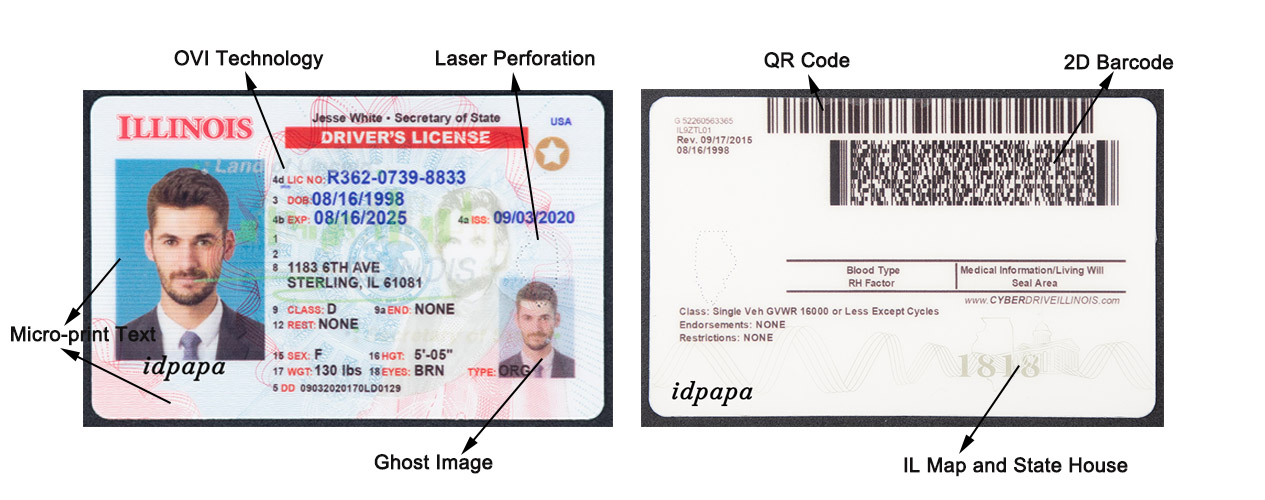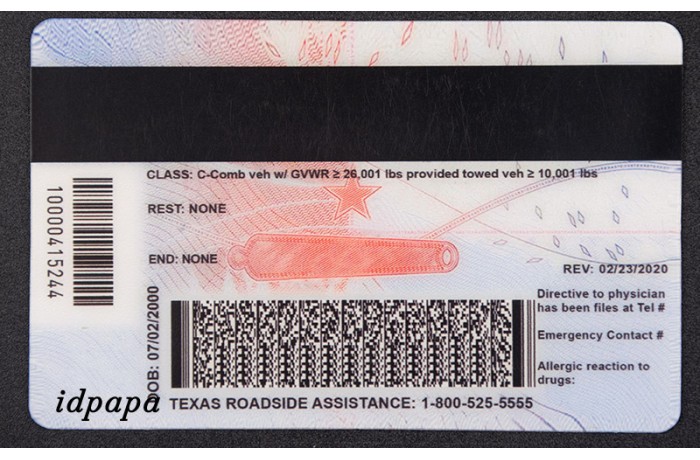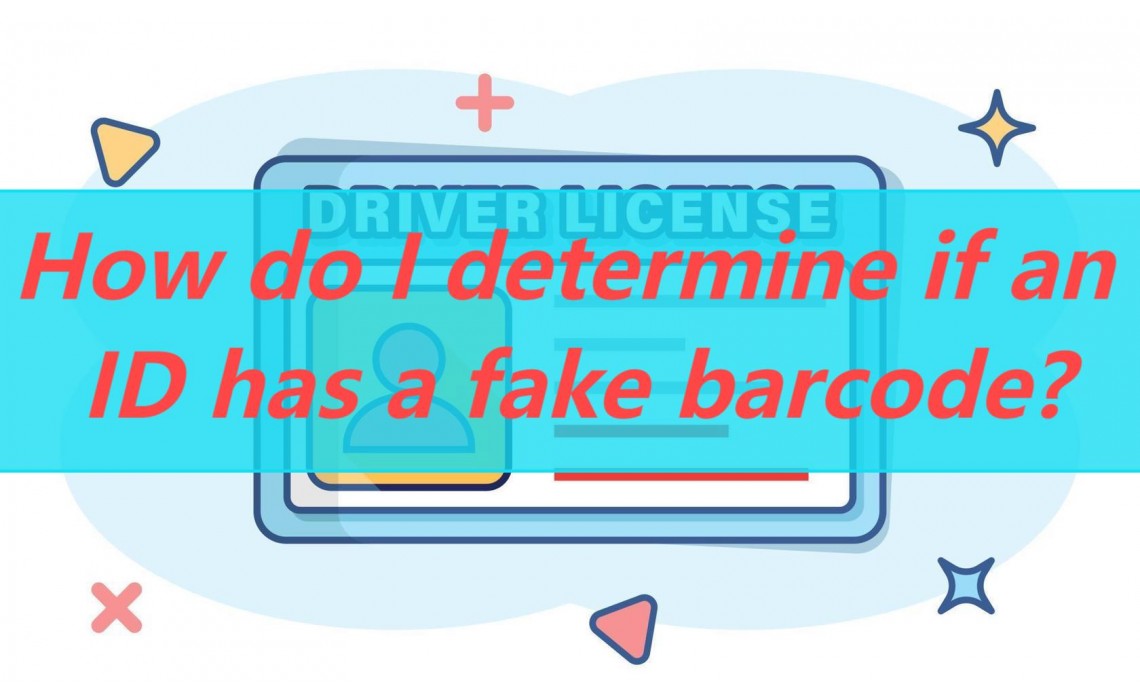How do I determine if an ID has a fake barcode?
How do I determine if an ID has a fake barcode?

Introduction
With the widespread use of barcode scanning for identity verification, businesses, government institutions, and security agencies are continuously improving their methods to detect fake ID cards. A fake barcode on an ID card may look real, but when scanned, it can reveal critical errors that expose the fraudulent nature of the ID.
For those using or checking IDs in nightclubs, bars, retail stores, and corporate environments, understanding how to determine if an ID barcode is fake is essential. This article will explore the technology behind ID barcodes, how scanners verify their authenticity, and practical ways to detect fraudulent barcodes before they cause problems.
Understanding ID Card Barcodes
ID cards, such as driver’s licenses, student IDs, and employee badges, feature barcodes that store encoded information. These barcodes are designed to be read by digital scanners for fast verification. The most common types of barcodes on IDs include:
✅ PDF417 Barcode – Used on driver’s licenses and government IDs, containing encoded personal details like name, birthdate, and address.
✅ QR Codes – Found on some digital IDs, linking to an official verification database.
✅ Magnetic Stripe – While not a barcode, these are often paired with barcodes to store scannable data.
A legitimate barcode encodes data correctly and is structured according to government-issued standards. A fake barcode, however, may fail to scan or display inconsistent data.
How Do Scanners Verify ID Barcodes?

ID scanners work by reading the barcode, decoding the information, and checking it against a database or local verification system. This process follows several key steps:
1️⃣ Data Extraction – The scanner reads and deciphers the barcode’s contents.
2️⃣ Format Validation – The extracted data is analyzed for correct structure and format.
3️⃣ Database Cross-Check – If applicable, the data is compared with government or institutional records.
4️⃣ Authentication Confirmation – If the barcode is real, the system approves it; otherwise, it gets flagged as suspicious.
If an ID barcode fails any of these steps, it may be a fake or altered barcode.
Signs That an ID Barcode is Fake
If you want to detect whether an ID barcode is fake, look for these common warning signs:
1. The Barcode Doesn’t Scan
A well-made fake ID should pass a scan test, but many fail because:
●The barcode is poorly printed and unreadable by scanners.
●The barcode contains no real encoded data (dummy data instead of structured info).
●The ID lacks proper encoding, making it invalid for scanning.
If an ID doesn’t scan at a bar, club, or retail store, it may be fake.
2. Mismatched Data in the Barcode
A fake barcode may be structured properly but contain inaccurate details when scanned.
●If the scanned data does not match what’s printed on the card, it’s fake.
●Errors in formatting, such as incorrect birthdates, names, or ID numbers, indicate fraud.
●Some fakes copy a real barcode from another person’s ID, but personal information will differ when checked against a database.
3. Barcode Format Irregularities
Legitimate IDs follow strict formatting guidelines for barcode creation. A fake barcode may have:
●Incorrect spacing, pixelation, or blurry printing.
●Unusual alignment or missing sections.
●A barcode length that is too short or too long compared to real IDs.
4. Failure in Government or Business Verification Systems
If an ID barcode is scanned at a location with a government database verification system, it should return a valid match. A fake barcode will fail this cross-check, leading to instant detection.
Examples of places where fake barcodes fail:
●Casinos and high-security venues with government-linked ID verification.
●Retail stores selling age-restricted products (alcohol, tobacco, etc.).
●Financial institutions that require ID verification for transactions.
5. Fake Barcodes Created with Online Generators
Some scammers attempt to create fake barcodes using online generators, but these barcodes rarely pass professional scanning tools because:
●They are randomly generated rather than following official ID structures.
●They lack proper encoding that links to real data.
●They may use incorrect checksum algorithms, making them easy to spot.
How to Test an ID Barcode for Authenticity
If you suspect an ID barcode is fake, you can test it using different methods:
✅ 1. Use a Barcode Scanning App
Download ID scanner apps like VeriScan, Bar & Club Scanner, or any PDF417 reader and scan the barcode.
●If the app does not read the barcode, it may be fake.
●If the data appears but does not match the ID, it’s fraudulent.
✅ 2. Compare Against a Real ID
If you have access to a real driver’s license or state-issued ID, compare:
●The barcode positioning and size.
●The font and structure of the printed details.
●The way the barcode scans versus a known real ID.
✅ 3. Cross-Check Data with Official Databases
●In businesses with ID verification systems, the barcode is checked against government records.
●If the barcode doesn’t match any registered record, the ID is fake.
✅ 4. Perform a Visual Inspection
●Check the barcode quality and alignment.
●Look for microprinting, holograms, or raised text that are present on real IDs.
●If the barcode is misaligned, blurry, or pixelated, it could be fake.
Why People Use Fake Barcodes on IDs
People use fake barcode IDs for various reasons, including:
✔️ Accessing Age-Restricted Areas – Getting into bars, clubs, and concerts.
✔️ Purchasing Alcohol or Tobacco – Bypassing age verification at retail stores.
✔️ Avoiding Suspicion – Using scannable IDs to prevent immediate detection.
✔️ Employment Fraud – Presenting an altered ID to secure a job.
✔️ Travel and Security Clearance – In rare cases, people attempt to use fake IDs for access to restricted areas.
How Fake ID Technology is Advancing
As ID verification improves, so does fake ID technology. Fraudulent ID makers now:
●Embed realistic barcodes with encoded data.
●Mimic real-state issued formatting to fool scanners.
●Use magnetic strip encoding along with barcodes.
However, government verification systems are adapting by linking all scanned IDs to state and federal databases, making fake barcode detection more effective than ever.
Final Thoughts
A fake barcode on an ID might look legitimate, but it won’t pass a professional scan test if it isn’t encoded correctly. By checking an ID barcode using scanning apps, visual inspections, and cross-referencing data, you can easily determine whether an ID is fake.
For those who need to order high-quality scannable ID, it’s crucial to ensure that barcodes, magnetic strips, and encoded data match real government standards. As technology continues to evolve, fake barcodes will become easier to detect, making proper verification more important than ever.


